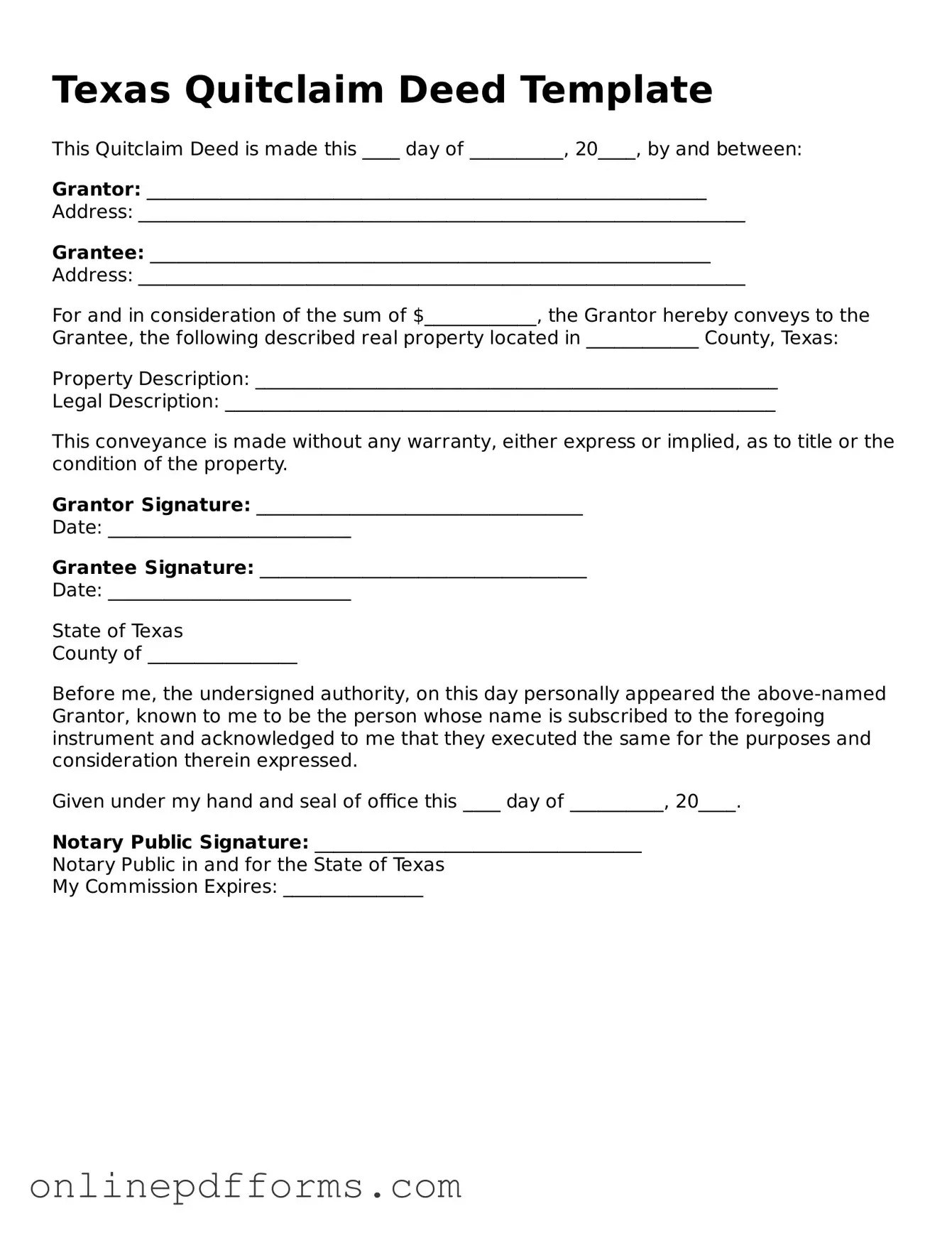A Warranty Deed is similar to a Quitclaim Deed in that both are used to transfer property ownership. However, the key difference lies in the guarantees provided. A Warranty Deed offers a guarantee that the seller holds clear title to the property and has the right to sell it. In contrast, a Quitclaim Deed makes no such guarantees, which means the buyer assumes the risk of any title issues. This makes Warranty Deeds more secure for buyers, while Quitclaim Deeds are often used in less formal transactions, such as transferring property between family members.
A Bargain and Sale Deed also serves the purpose of transferring property ownership, but it includes some assurances about the title. This type of deed implies that the seller has the right to sell the property, but it does not guarantee that the title is free from encumbrances. Like a Quitclaim Deed, it is often used in situations where the buyer knows the seller well, but it offers a bit more protection regarding the seller's ownership rights.
A Special Warranty Deed is another document similar to a Quitclaim Deed. It transfers property ownership but provides a limited warranty on the title. The seller guarantees that they have not encumbered the property during their ownership. This differs from a Quitclaim Deed, which offers no guarantees at all. Special Warranty Deeds are often used in commercial transactions where the seller wants to limit their liability regarding the title.
A Deed of Trust is related but serves a different purpose. It is used to secure a loan with real property as collateral. In a Deed of Trust, the borrower conveys the property to a trustee, who holds the title until the loan is repaid. While a Quitclaim Deed transfers ownership outright, a Deed of Trust creates a security interest in the property, making it an essential document in real estate financing.
A Life Estate Deed allows a property owner to transfer ownership while retaining the right to use the property for the rest of their life. This is similar to a Quitclaim Deed in that it transfers property rights, but it does so with specific conditions. The new owner, known as the remainderman, receives full ownership only after the original owner passes away. This type of deed is often used for estate planning purposes.
Finally, a Transfer on Death Deed (TOD) allows an individual to transfer property upon their death without going through probate. This deed is similar to a Quitclaim Deed in that it transfers ownership, but it only takes effect after the owner's death. The property owner retains full control during their lifetime, making it a useful tool for estate planning. Unlike Quitclaim Deeds, which transfer ownership immediately, a TOD Deed ensures that the property passes directly to the designated beneficiary without additional legal hurdles.
